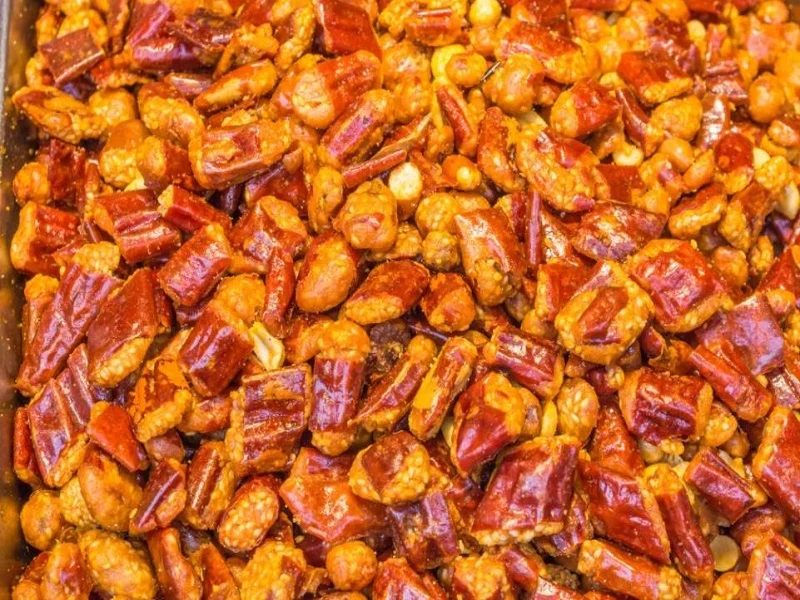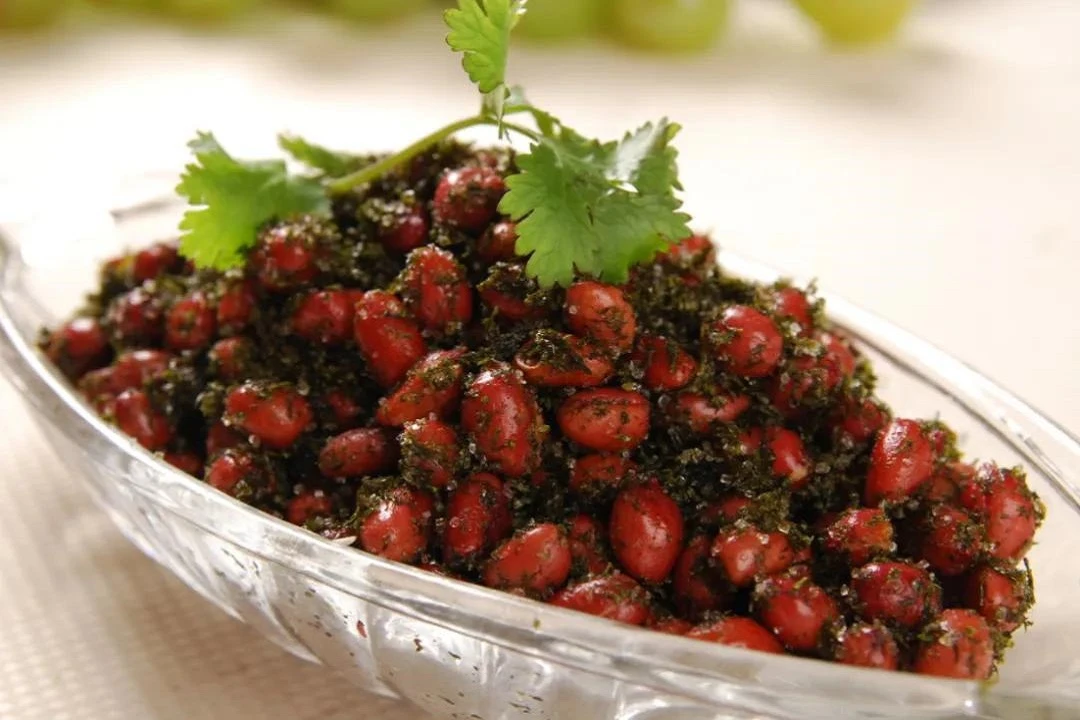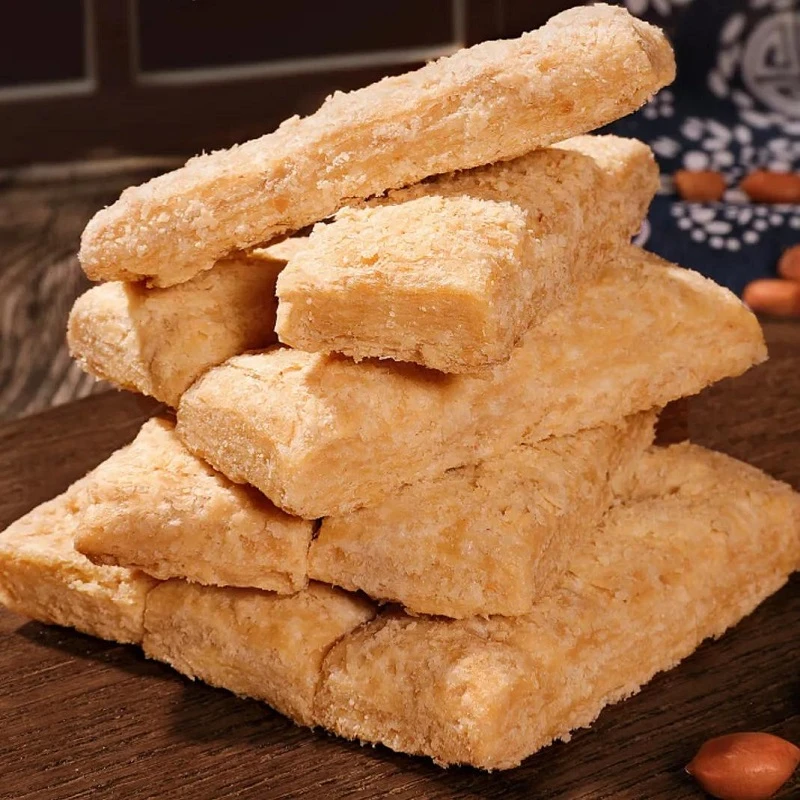With the European Championship just over and the Olympics on the horizon, summer nights are made for watching sports. But just beer can be too monotonous. Enter the flavorful duo of boiled edamame and boiled peanuts. These two snacks, often seasoned together as "flower and bean harmony," not only make great companions on the table but also shine individually in various dishes and snacks.

Edamame: More Than Just a Simple Snack
Edamame, or young soybeans, are visually appealing with their vibrant green color and a texture that is both crunchy and tender. The simplest way to prepare edamame is by boiling them in water with some salt and spices like star anise and Sichuan peppercorns. After boiling, let them cool naturally, and they're ready to eat. Historically, in old Beijing taverns, entire edamame plants were boiled, and diners would pick the pods themselves.
To make the flavors more pronounced, you can trim the ends of the pods before boiling, though it's not a must. Most people eat edamame by sucking the beans out of the pods, so the saltiness on the pod's surface enhances the flavor.
For a more complex taste, try cold tossed edamame, a summer favorite in Wuhan. The edamame pods are first boiled with spices like star anise, bay leaves, dried chili, and Sichuan peppercorns. After cooling, they are mixed with sautéed scallions, garlic, chili rings, soy sauce, vinegar, and sesame oil. The result is a spicy, tangy snack that's irresistible.
In the Jiangsu and Zhejiang regions, drunken edamame is a popular summer dish. The cooked pods are soaked in a fragrant rice wine byproduct called "Xiang Zao (香糟)" and then chilled, giving them a unique wine aroma.
In places like Ningbo and Shaoxing, edamame takes a bold turn with "stinky" preparations. The pods are fermented in a brine made from the stems of stinky amaranth, resulting in "stinky edamame" that has an intense smell but a surprisingly fresh taste.
Edamame's versatility doesn't end there. Shelled edamame can be stir-fried or steamed with various vegetables like loofah, green peppers, or taro. The crunchy texture and mild flavor make it an excellent addition to any dish. Stir-fried edamame with pickled mustard greens and shredded pork is a savory classic, perfect over noodles or rice. Another popular combination is with crispy radish, slightly salty and ideal with porridge.
In the Suzhou and Hangzhou area, "June yellow" crabs, which are still in their early growth stages, are a summer delicacy. These crabs are cleaned, halved, and either fried or steamed with edamame, offering a truly fresh and tender taste.
Leftover edamame can be boiled with salt, dried until the skin wrinkles, and enjoyed as chewy "baked green beans." In rural areas of Yuhang and Huzhou, it's common to drink "baked bean tea," a nod to the Song dynasty tea tradition, with ingredients like dried bamboo shoots, pickled orange peel, and sesame.
The Many Faces of Peanuts
Peanuts can be enjoyed in various ways, each method highlighting a different texture and flavor. Boiled peanuts are soft, fried peanuts are crunchy, and roasted peanuts are rich and aromatic. With added seasonings like Huai salt, garlic, five spice, or dried fish, peanuts can satisfy any taste preference.
De-skinned peanuts, rich in oils, are often made into spicy and crispy snacks by combining them with pepper, chili, and sesame. Some snacks feature peanuts coated in a thick layer of flour, known as "fish-skin peanuts," despite having no actual fish. Alternatively, they might be covered in a sugary coating, called "peanut candy" in some regions.
In Northeast China, cold tossed peanuts are a favorite. Peanuts are soaked in cold water, boiled until tender but still crisp, and then mixed with blanched celery. This dish is crunchy, salty, and refreshing.
Another popular snack is "old vinegar peanuts," where deep-fried peanuts are soaked in aged vinegar and garnished with cilantro. In Ningbo, "seaweed peanuts" are mixed with seaweed, adding a salty, oceanic flavor.
Peanuts are also a key ingredient in sweets. Whole peanuts are mixed with maltose, flattened, and cut into "peanut candy." The upgraded version, nougat, includes a creamy milk flavor. The finely crafted peanut cakes from Kaifeng are made by grinding roasted peanuts and mixing them with syrup and glutinous rice flour for a soft, sweet treat.
Fujian's "gong tang" is similar to peanut cake but involves multiple rounds of pounding to achieve a powdery consistency that melts in your mouth. In Xiamen, spring rolls often include a sprinkle of gong tang powder for added flavor.
Peanuts can also enrich soups, making them more nourishing. In savory broths like pork foot soup, rib soup, or lotus root soup, peanuts add a satisfying, hearty texture. Hanzhong's peanut porridge, a breakfast staple, features peanuts ground into a smooth paste and cooked with rice for a rich, creamy dish.
In Fujian, peanut soup is a beloved sweet treat. The soup is milky white with intact peanut halves that are soft yet firm. It's enjoyed year-round, served hot in winter and chilled in summer.
In Yunnan's Pu'er region, peanut soup rice noodles are a local specialty. Ground peanuts are made into a fragrant, sweet soup poured over rice noodles. Diners can add chili, soy sauce, garlic, and pickled cabbage from a condiment bar for a personalized touch.
Finally, peanut butter is the ultimate transformation of peanuts. Its creamy texture and rich taste make it a favorite in both Western and Chinese cuisines. In Beijing, "28 sauce" combines peanut butter with sesame paste for a flavorful condiment. From toast spreads to Sha County's famous noodles and wontons, peanut butter adds a delicious aroma and depth of flavor.
So, next time you settle in for a sports marathon, consider pairing your viewing with the delightful and varied flavors of edamame and peanuts. These snacks offer not just a tasty alternative to beer but a journey through regional Chinese culinary traditions.



